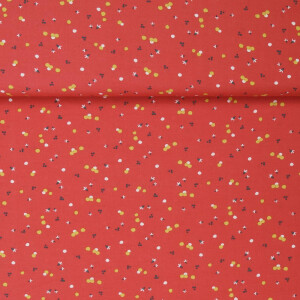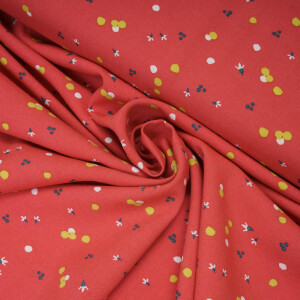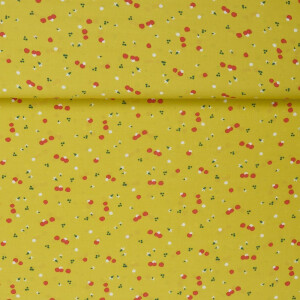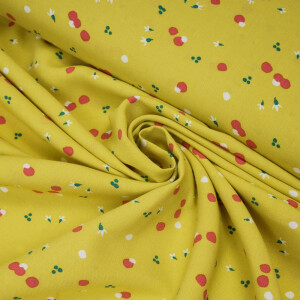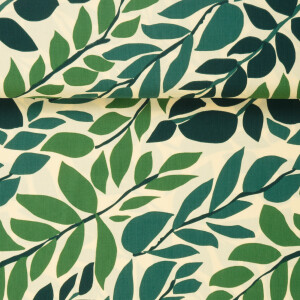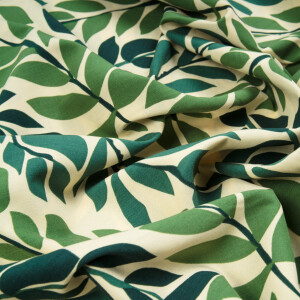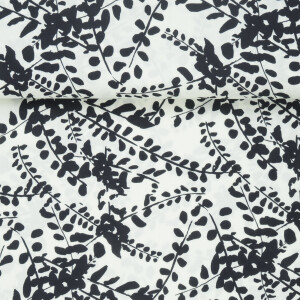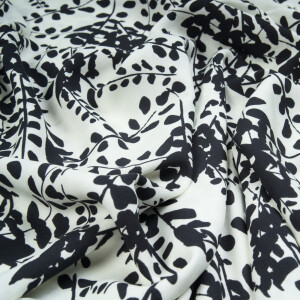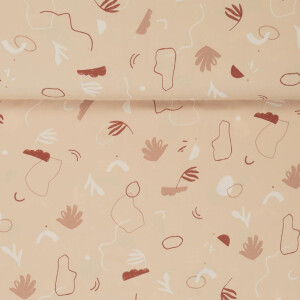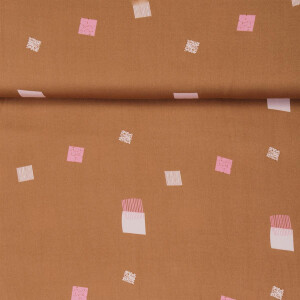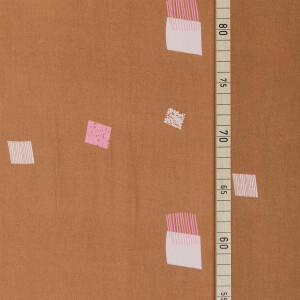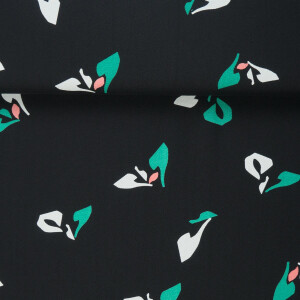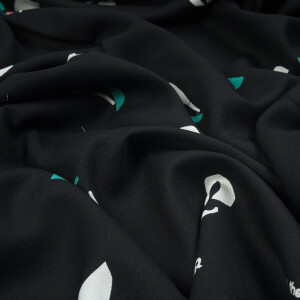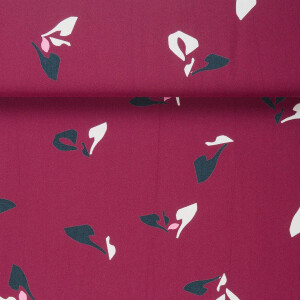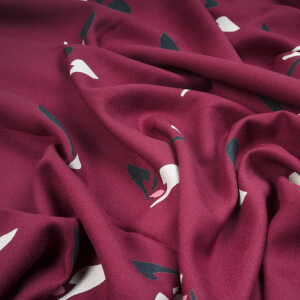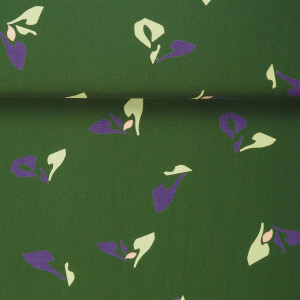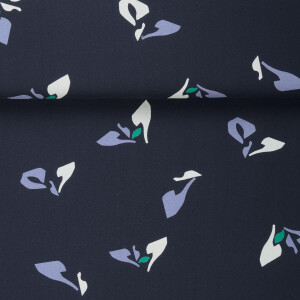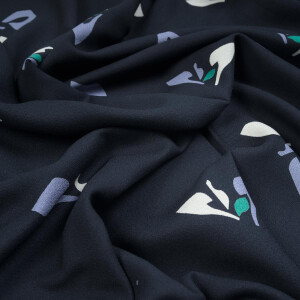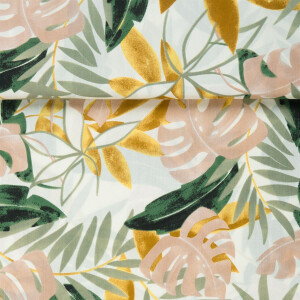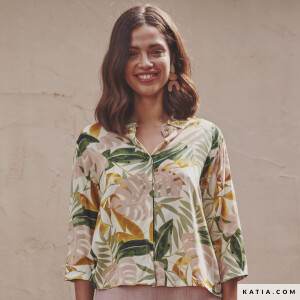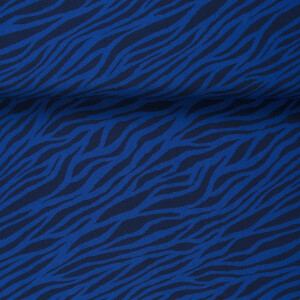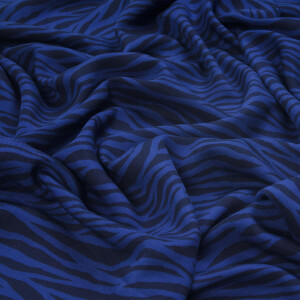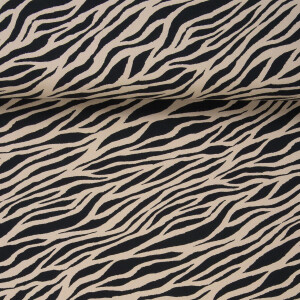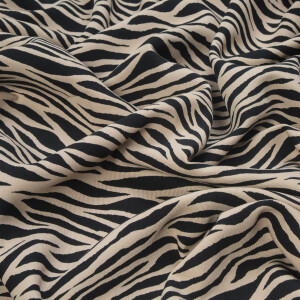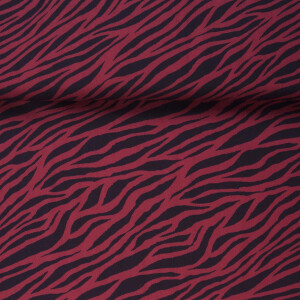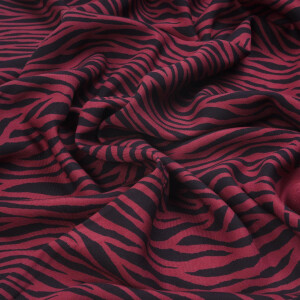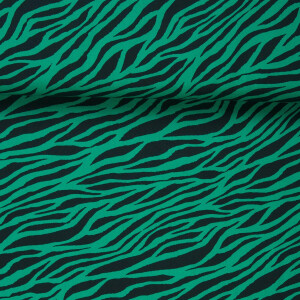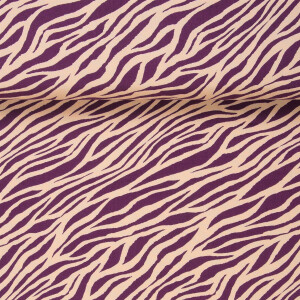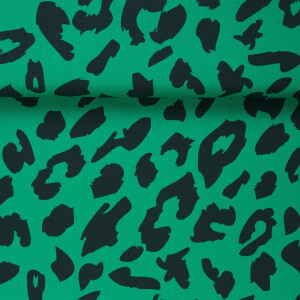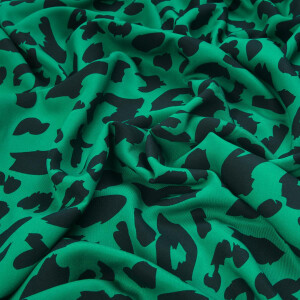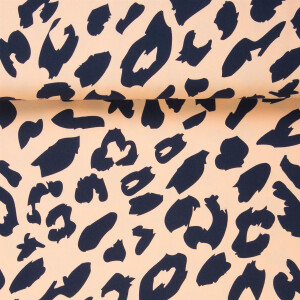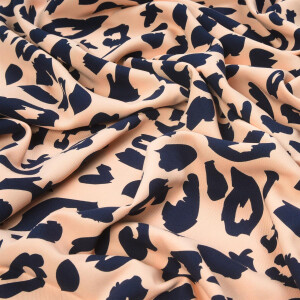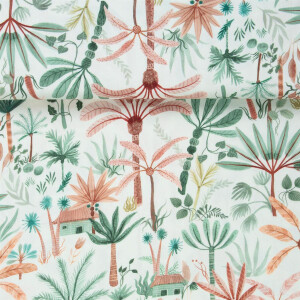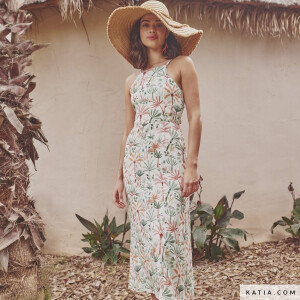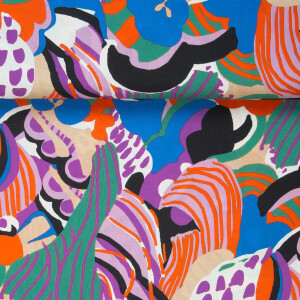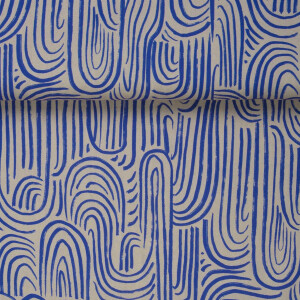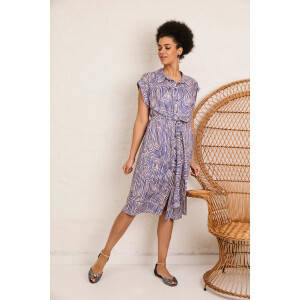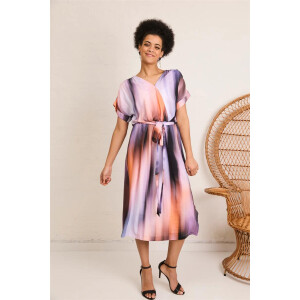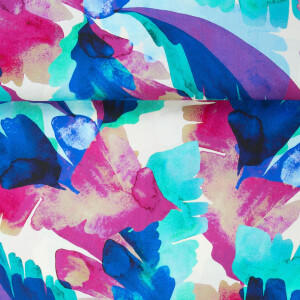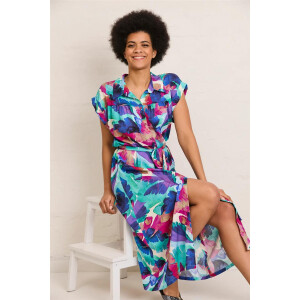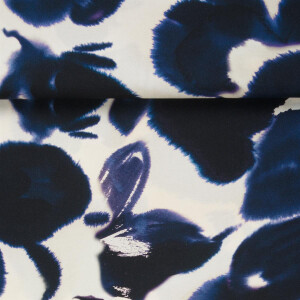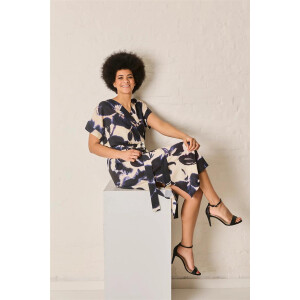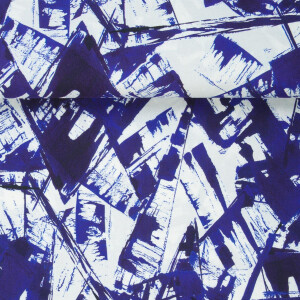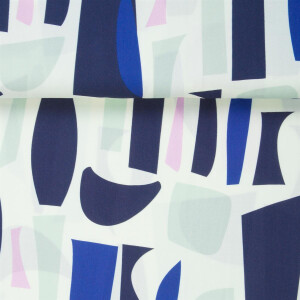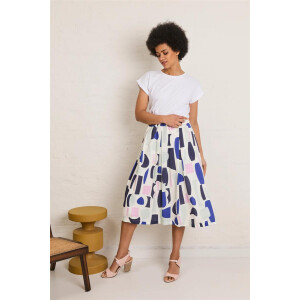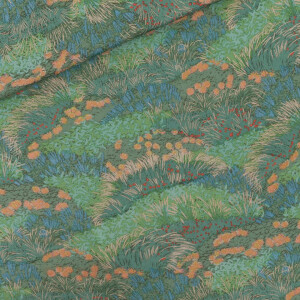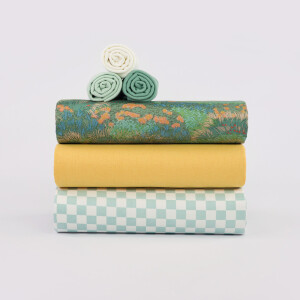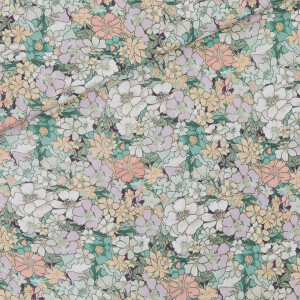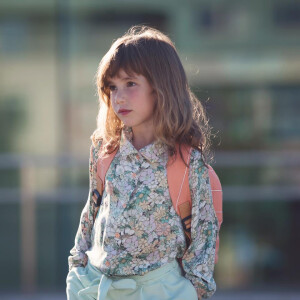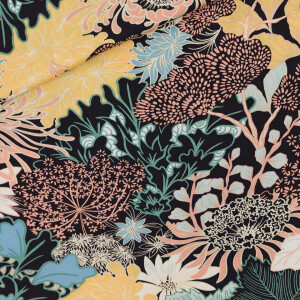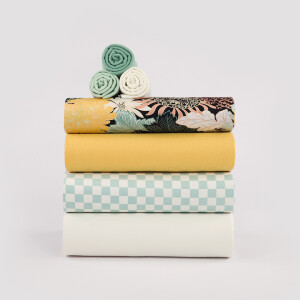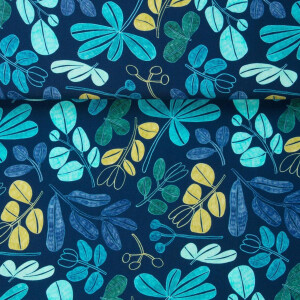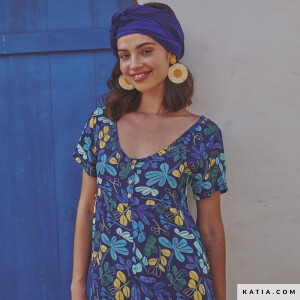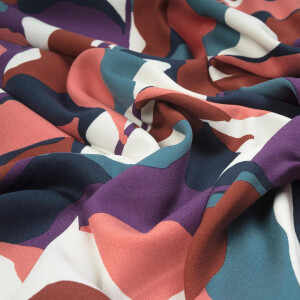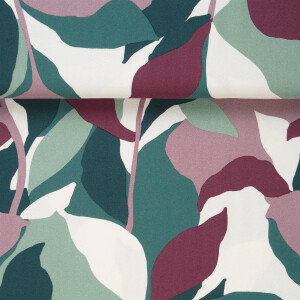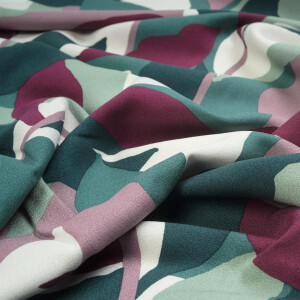Viscose
Viscose, also known as artificial silk, is one of the most versatile and popular types of fabric. Its properties make it ideal for sewing dresses, blouses and shirts. Here are some of the features that make viscose so perfect for these sewing projects:
Softness: viscose has a silky soft surface that is comfortable against the skin. This gives viscose garments a luxurious and comfortable feel.
Draping properties: Viscose fabrics have excellent draping properties, which means that they can be easily shaped and folded. This creates elegant silhouettes and the garments have a flowing and smooth drape.
Versatility: Viscose fibers are easy to dye and process, allowing them to be used in a wide range of designs and styles. Viscose clothing ranges from elegant evening dresses to casual everyday outfits.
Breathability: Viscose is known for its high breathability. The material allows good air exchange, making viscose garments comfortable to wear and particularly suitable for warm weather conditions
- Low stock level
-
Delivery time: 1 - 3 Workdays (DE - int. shipments may differ)
- Available immediately
-
Delivery time: 1 - 3 Workdays (DE - int. shipments may differ)
- Available immediately
-
Delivery time: 1 - 3 Workdays (DE - int. shipments may differ)
- Available immediately
-
Delivery time: 1 - 3 Workdays (DE - int. shipments may differ)
- Available immediately
-
Delivery time: 1 - 3 Workdays (DE - int. shipments may differ)
- Available immediately
-
Delivery time: 1 - 3 Workdays (DE - int. shipments may differ)
- Available immediately
-
Delivery time: 1 - 3 Workdays (DE - int. shipments may differ)
- Available immediately
-
Delivery time: 1 - 3 Workdays (DE - int. shipments may differ)
- Available immediately
-
Delivery time: 1 - 3 Workdays (DE - int. shipments may differ)
- Available immediately
-
Delivery time: 1 - 3 Workdays (DE - int. shipments may differ)
- Low stock level
-
Delivery time: 1 - 3 Workdays (DE - int. shipments may differ)
- Available immediately
-
Delivery time: 1 - 3 Workdays (DE - int. shipments may differ)
- Available immediately
-
Delivery time: 1 - 3 Workdays (DE - int. shipments may differ)
- Available immediately
-
Delivery time: 1 - 3 Workdays (DE - int. shipments may differ)
- Available immediately
-
Delivery time: 1 - 3 Workdays (DE - int. shipments may differ)
- Available immediately
-
Delivery time: 1 - 3 Workdays (DE - int. shipments may differ)
- Available immediately
-
Delivery time: 1 - 3 Workdays (DE - int. shipments may differ)
- Available immediately
-
Delivery time: 1 - 3 Workdays (DE - int. shipments may differ)
- Available immediately
-
Delivery time: 1 - 3 Workdays (DE - int. shipments may differ)
- Available immediately
-
Delivery time: 1 - 3 Workdays (DE - int. shipments may differ)
- Available immediately
-
Delivery time: 1 - 3 Workdays (DE - int. shipments may differ)
- Available immediately
-
Delivery time: 1 - 3 Workdays (DE - int. shipments may differ)
- Available immediately
-
Delivery time: 1 - 3 Workdays (DE - int. shipments may differ)
- Available immediately
-
Delivery time: 1 - 3 Workdays (DE - int. shipments may differ)
- Available immediately
-
Delivery time: 1 - 3 Workdays (DE - int. shipments may differ)
- Available immediately
-
Delivery time: 1 - 3 Workdays (DE - int. shipments may differ)
- Available immediately
-
Delivery time: 1 - 3 Workdays (DE - int. shipments may differ)
- Available immediately
-
Delivery time: 1 - 3 Workdays (DE - int. shipments may differ)
- Available immediately
-
Delivery time: 1 - 3 Workdays (DE - int. shipments may differ)
- Available immediately
-
Delivery time: 1 - 3 Workdays (DE - int. shipments may differ)
- Available immediately
-
Delivery time: 1 - 3 Workdays (DE - int. shipments may differ)
- Available immediately
-
Delivery time: 1 - 3 Workdays (DE - int. shipments may differ)
Light, flowing fabrics made from Tencel, modal or viscose are suitable for dresses, blouses, skirts ...
...and many other sewing projects. They are pleasantly cool on the skin and give an airy feeling on hot days. Thanks to their high-quality, silk-like appearance, they are also ideal for wardrobes for more elegant occasions. Whether as dress fabric, blouse fabric or fabric for skirts or scarves - they caress the skin and look high quality.viscose jerseys are particularly stretchy and therefore very comfortable to wear. They are perfect for chic everyday wear for leisure and work.
Viscose and modal fabrics are all made from wood fibers.
Beech wood from the Central European region is often used. Despite the natural origin of the wood, it is referred to as a synthetic fiber, as the wood fibers are turned into cellulose in a chemical process and then spun. Viscose and modal differ in the spinning process; modal is often referred to as the better viscose. Modal is more hard-wearing and durable than viscose.
Viscose consists of pure, regenerated cellulose. Viscose is very soft and lappish to the touch and therefore very comfortable to wear on the skin. Viscose is very absorbent. The filament yarns are smooth and shiny, they have a "silk look" and are therefore used to make dresses and blouses. Staple fibers with a "cotton or linen look" are processed into pure outerwear or mixed with other raw materials.
Processing and care instructions
1. always pre-wash! Woven fabrics can shrink.
2. Iron! A wrinkled fabric can never be cut and sewn exactly.
3. if the fabric is treated with spray starch before ironing, it is easier to work with.
4. when cutting out pattern pieces, it is better to weigh them down with weights instead of pinning them on.
5. cutting is best done with a rotary cutter (as this prevents the fabric from slipping) or with sharp tailor's scissors.
6. mark snips with tailor's chalk or magic marker.
7. add sufficient seam allowance. This will prevent the fabric from pulling into the sewing machine when sewing.
8. Finish the fabric edges with an overlock or zigzag stitch.
9. Sew with a normal sewing machine.
10. It is best to use a Microtex needle that matches the fabric for sewing.
11. Necklines should always be sewn with a facing. Reinforce this if necessary to prevent the fabric from warping.



